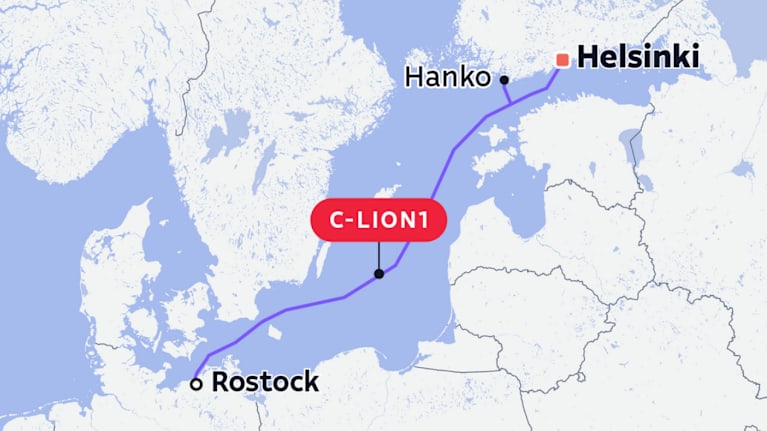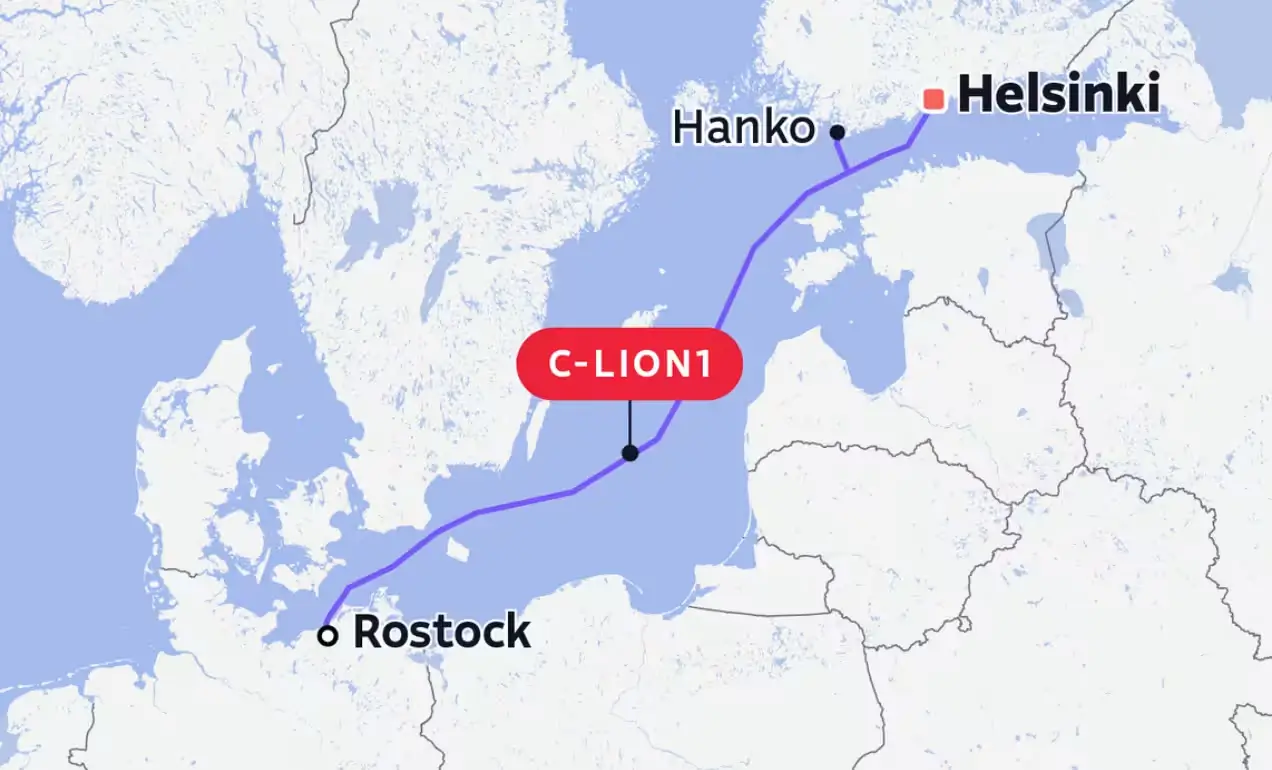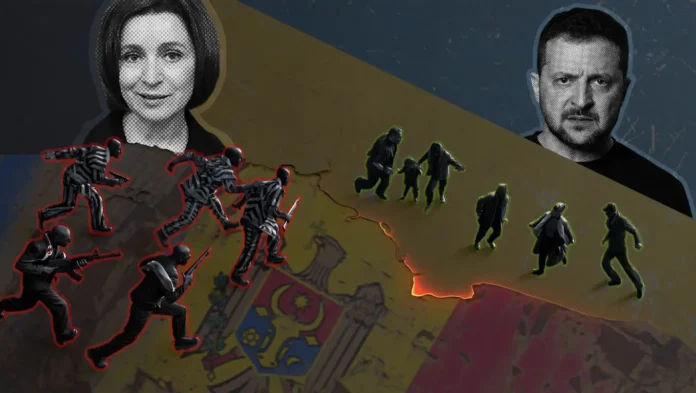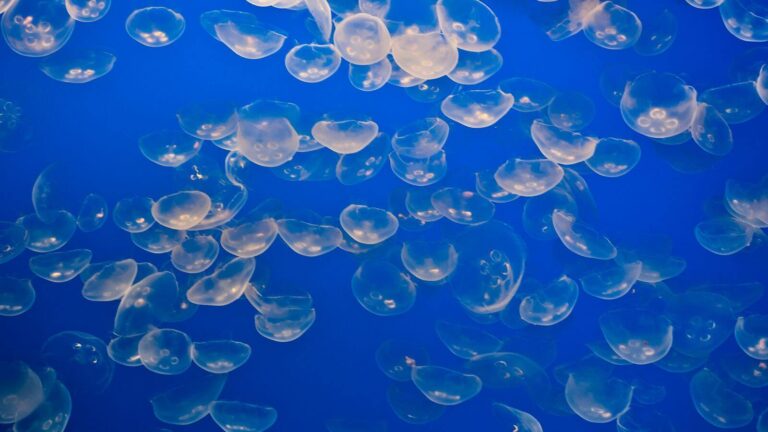All telecommunications running on the submarine cable have been cut off. A cybersecurity expert tells Yle that the cable break is likely to be intentional.
An undersea telecommunications cable that links Finland to continental Europe has been damaged.
The C-Lion1 submarine cable, which runs between Finland and Germany, has a malfunction, according to Cinia, a majority-state-owned Finnish company that builds fibre optic networks and supplies telecommunications services.
All telecommunications running on the submarine cable have been cut off.
Traficom confirms break
Samuli Bergström, communications chief at the Finnish National Cyber Security Centre Traficom, confirmed the cable break to Yle.
“The reasons are under investigation. Disturbances occur from time to time and there can be various reasons. For example, they are susceptible to weather and damage caused by shipping. The essential thing is that the problems are identified and corrective measures are taken,” he said.
Bergström confirmed that the interruption affects Finland’s international connections.
“However, it is good to keep in mind that data connections out of Finland go from several different places. Now one of these connections is broken, which may burden others [but the effects are] probably not visible to the average citizen,” he said.
Frantti: Russia might have a motive
The cable rupture is more likely to be the result of an intentional act than an accident, Tapio Frantti, professor of cybersecurity at the University of Jyväskylä, told Yle. His evaluation was based on preliminary media information.
“If you look at this from the point of view of probability, then yes, this is on the side of intentionality,” said Frantti.
CLICK HERE TO READ MORE FROM THE REPUBLICAN VOICE
“When a cable breaks, it raises questions as to why it happened [and] who might have a motive to do something like this,” Frantti continued.
In his view, Russia might have such a motive, for example.
“They really seem to think that they have a special right to do such things. The motive for sabotage is usually that it’s done because it can be done,” he added.
Frantti said that while the consequences of a single cable break are not very serious, it would be worrying if the act was revealed to be intentional.
“It comes to mind that this could be a practice for a larger-scale act if there is a need for that,” he said.
Supo: Too early to assess cause
The Finnish Security and Intelligence Service (Supo) told Yle on Monday afternoon that it was too early to assess the cause of the cable breakage.
The agency noted that around 200 submarine cable breaks occur worldwide each year.
“The most common cause of cable breakage is human activity, such as fishing or anchoring,” a spokesperson said.
Cinia: Reason unclear
Cinia said the fault was noticed sometime after 4am Monday. It says the cause of the failure remains unclear.

The cable, which is 1,173 kilometres long, runs between Helsinki’s Santahamina island and Germany’s Rostock.
Cinia said that a repair vessel is prepared to go to the site, and that the repair efforts have been started. The firm said it does not yet know how long it will take to fix the link, but adds that repair time for submarine cables is typically 5-15 days.
The laying of the cable started in October 2015 and it was commissioned in the spring of 2016. It is the only Finnish submarine cable that runs directly to Central Europe.
First time cable has broken
At a press conference on Monday, Cinia’s CEO, Ari-Jussi Knaapila said that C-Lion1 has never broken before.
The reason why the cable broke is not yet known, according to the company. But a company spokesperson said that cables do not break without an external impact, adding that there were no seismic events that could have been responsible for the situation.
Knaapila said he did not want to speculate about how the cable was damaged, adding that the reasons would be explored when it is repaired.
Mending the cable involves pulling it to the surface with the repair vessel, according to Cinia, a company which is more than 77 percent state-owned.
According to news site Verkkouutiset, the C-Lion1 cable has eight optical fibre pairs with a transmission capacity of 144 terabits per second.
When the cable was put into use, Cinia said that it would be used by data centre operators Hetzner Online and TeliaSonera, as well as the Russian telecom operator Avelacom, which at that time planned to connect the cable to its own network stretching from Finland to Moscow.
In October 2023, an electric cable and a gas pipeline between Finland and Estonia were broken, apparently by the anchor of a Chinese ship.
Around the same time, Sweden announced separate damage to a cable linking it with Estonia.
CLICK HERE TO READ MORE FROM THE REPUBLICAN VOICE
This past January, authorities said that damage to another electric cable between Finland and Estonia was probably not caused by an external factor.
Meanwhile the 2022 destruction of the Nord Stream gas pipelines between Sweden and Denmark remains unresolved.
source: https://yle.fi/























